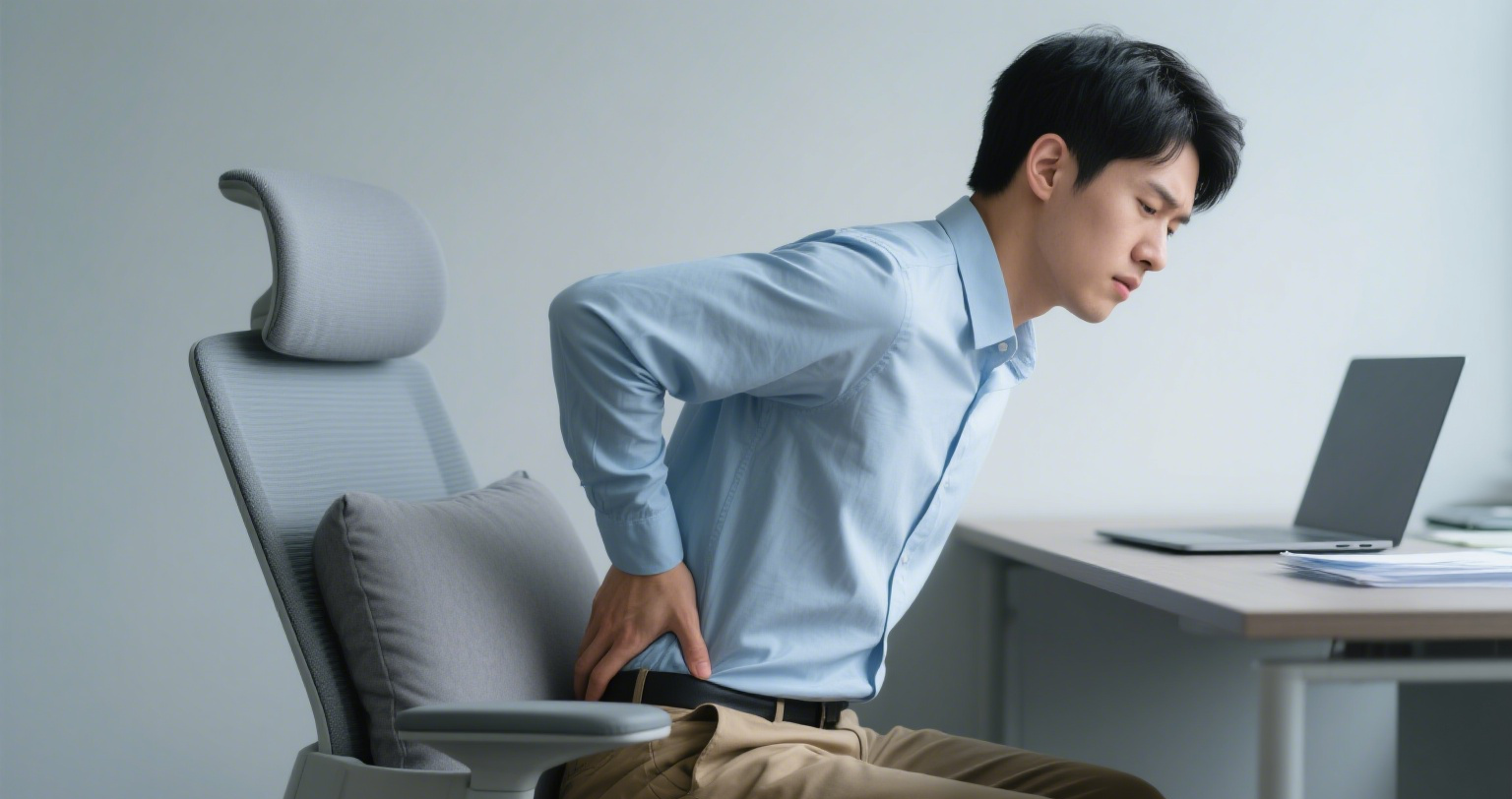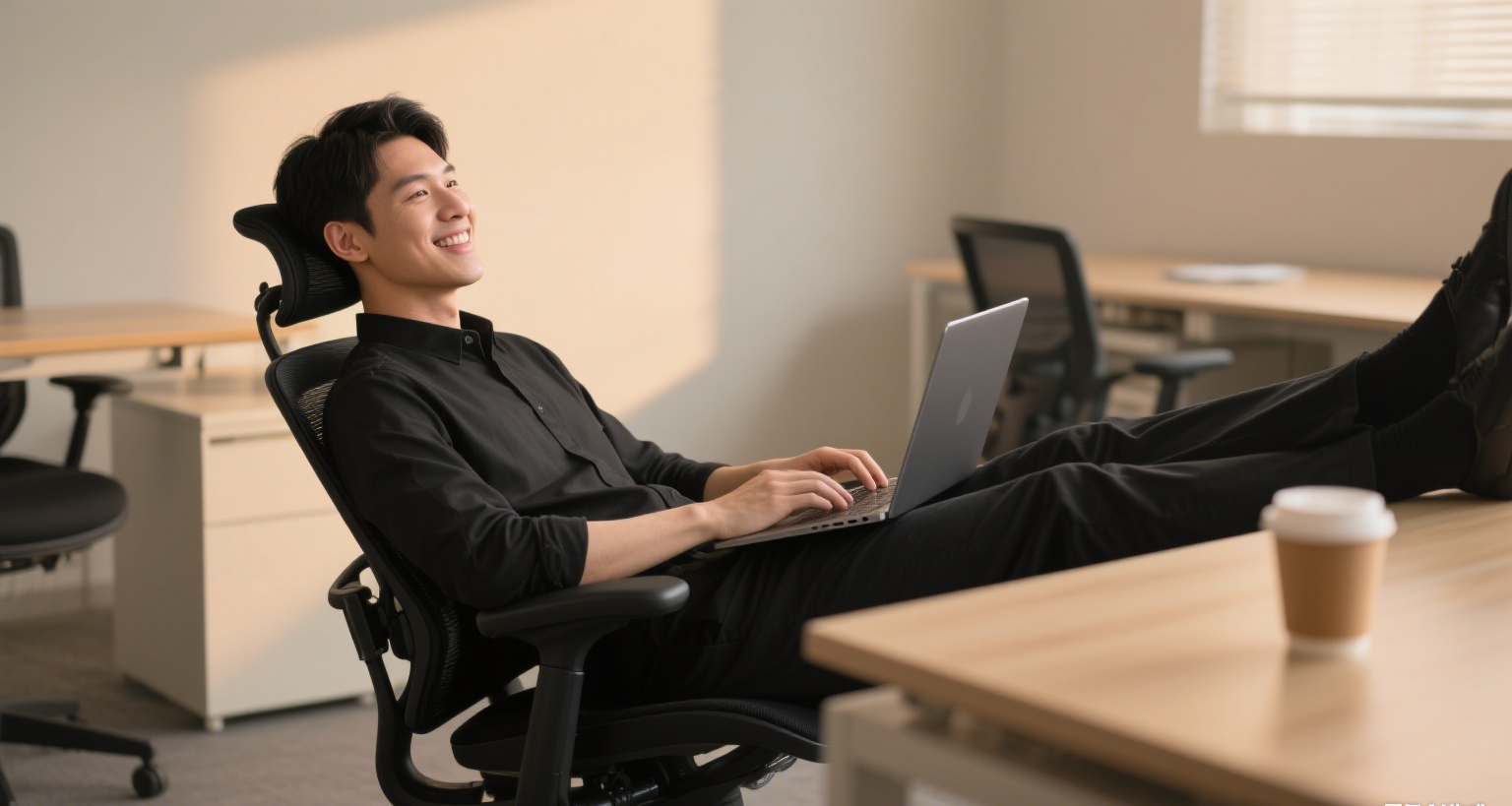Say Goodbye to Lumbar Strain: Why Back Cushions Are a Temporary Fix, and Ergonomic Chairs Are the Real Solution
In modern offices, "prolonged sitting" has become the norm. Working at a desk for over 8 hours daily puts immense pressure on the lumbar spine—statistics show that lumbar disc pressure when sitting is 1.5 times that when standing, and up to 2.5 times with poor posture. This has led to lumbar muscle strain and disc issues increasingly affecting 25-40-year-olds. Many turn to lumbar cushions for relief, but are these a real solution? In truth, a professional ergonomic chair offers far better protection for the lower back.
I. The Limits of Lumbar Cushions: Temporary Comfort, Not a Cure
Lumbar cushions do provide short-term comfort. Their filling (memory foam, down) offers mild support, easing muscle tension briefly. But ergonomically, this relief is passive and incomplete, with hidden risks.
First, cushions offer static support, unfit for dynamic movement. People shift posture every 15-30 minutes—leaning forward to type, back to think, or sideways to reach. A fixed cushion presses the lower back when leaning forward and leaves a gap when leaning back, making muscles work harder and tiring faster.
Second, their support range is too narrow to balance the entire spine. Lumbar health depends on the cervical, thoracic, and sacral vertebrae. For example, a poorly adjusted seat height tilts the pelvis back, straightening the lumbar curve. A cushion can’t fix this structural issue, only covering a small area without adjusting seat height or back angle.
Third, material flaws abound. Overly thick filling causes excessive lumbar curvature, while non-breathable materials trap heat, making users shift often and straining the back more.

II. Ergonomic Chairs: Adapting to Your Body, Not the Other Way Around
A quality ergonomic chair isn’t just a chair with a lumbar pillow. It uses adjustable features to let the chair fit your body, solving issues at the source.
1. Dynamic Lumbar Support: Fits Every Body and Posture
The key is an adjustable lumbar pillow—moving up/down for different heights and forward/back for support intensity. A 180cm user needs it at the 4th-5th lumbar vertebrae; a 155cm user at the 3rd-4th. It can push forward for typing or retract for resting, keeping the lumbar curve natural.
Advanced models use adaptive tech (springs, airbags) that adjusts support with body weight and movement. Leaning forward increases support; leaning back reduces it, adapting seamlessly.
2. Full Spinal Alignment: Supports Every Vertebra
The backrest follows the spine’s S-curve, supporting each section:
This full support avoids the "lumbar only" issue of cushions, balancing pressure across the spine.
3. Seat and Armrests: Easing Lumbar Strain
Discomfort elsewhere forces the lower back to compensate. Ergonomic chairs fix this:
6D armrests (move up/down, forward/back, rotate) let arms rest naturally, relaxing shoulders and reducing lumbar strain.
These features stop posture compensation, letting the lower back stay relaxed.
4. Breathable Materials: Staying Comfortable All Day
Mesh fabric (like high-elastic nylon) keeps air flowing, preventing sweat and itching. The "waterfall" seat front avoids pressing thigh blood vessels, boosting circulation and reducing fidgeting.
III. An Investment in Health, Not a Luxury
Price concerns are common, but an ergonomic chair saves money long-term:
A regular chair plus yearly cushion replacements costs 1,000-2,000 yuan over 5 years, with no real fix.
For those sitting 8+ hours daily—professionals, programmers, designers—ergonomic chairs are essential, not luxury. They let you finish work without back pain, making them a vital part of a healthy work life.





